From humble beginnings, Kimsan Sok has built a successful career in hospitality. She runs one of the best restaurants in Cambodia and is an ambassador of Khmer gastronomy. Her professional success is a sterling example of the profound impact of Sala Baï Hotel & Restaurant School in Cambodia.

Chef Sok, together with co-executive chef Pol, head up Embassy, a fine-dining Khmer restaurant located in Siem Reap. Being the gateway to the ruins of Angkor Wat, Siem Reap’s hospitality sector has been experiencing a boom, attracting an estimated one million visitors to the town annually.
Sok is a graduate of Sala Baï Hotel & Restaurant School, a non-profit organisation based in Siem Reap, which provides vocational training free of charge to young underprivileged Cambodians in the main professions of the hospitality industry.
After graduation, Sok’s culinary career began at Belmond La Residence d’Angkor Hotel in Cambodia, before venturing to the Middle East (Grand Hyatt Dubai) and subsequently to France (Les Enfants Perdus, Restaurant Regis & Jacques Marcon). Over the years, she has attended a range of foodservice training sessions, demonstrations and cooking competitions worldwide.
In November 2018, Sok was invited by Friends of Sala Baï Australia (eHotelier is a sponsor of the project) to attend and cook for its annual fund-raising event held at QStation; an award-winning hotel perched upon Sydney Harbour’s picturesque North Head. She created an extraordinary Cambodian menu for the guests and was presented the career achievement award on behalf of Friends of Sala Baï. We took the opportunity to ask her a few questions about her culinary journey so far.
What was your inspiration to become a chef?
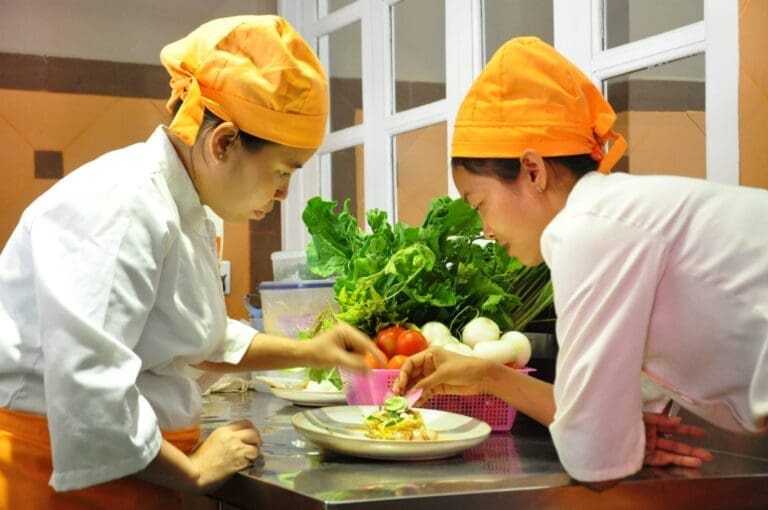
My mum used to be a village cook, which is an important position in Cambodia. Village cooks are responsible for preparing the meals for all weddings, funerals or any Buddhist ceremonies happening in the village.
When I was a kid, I loved watching her cooking and helped with peeling and cutting vegetables. My parents were also growing rice and my older brothers and sisters helped them. When I was 10, I started going to school and was also in charge of cooking for the family when they came back from the fields.
My first dream was to become a nurse, but at the age of 18, I was forced to drop out of school as the cost of school supplies became too difficult to sustain for my parents.
Shortly after, my older brother heard on the radio that Sala Baï Hotel & Restaurant School had just opened and was recruiting its first students. He decided to bring me there on his bike. After attending exams, interviews and visits to my home, I was admitted to Sala Bai and became part of the first promotion of the school. That is where it all started.
What are your favourite places to eat in Siem Reap?
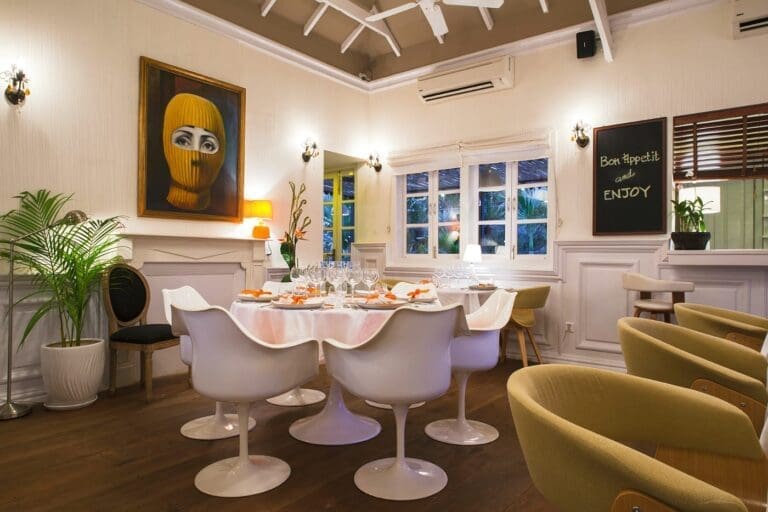
There are more and more talented chefs opening restaurants in Cambodia, and especially in Siem Reap. The culinary scene has become increasingly interesting this last decade and there is a lot of cooperation between us all. We belong to the same generation and work closely together to achieve the same goal of creating and showcasing the best Khmer gastronomy.
Borath from the Cambodian Chefs Association (CCA) is also the chef of the restaurant Asian Square. He is very supportive of all the other chefs. He always wants to advise us and he is very talented.
Chef Pola from Mie Café, chef Sothea from Mahob restaurant and chef Mengly from Pou Restaurant & Bar are also doing an amazing job!
What is the traditional Cambodian cuisine?
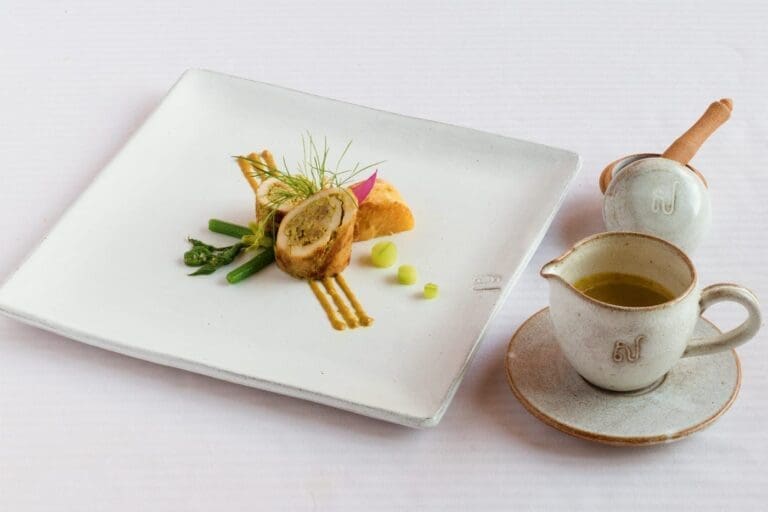
We have many ancestral recipes in Cambodia passed on from generation to generation. Cambodian cuisine is very codified: we have recipes for specific Buddhist ceremonies, some recipes for weddings, some for funerals, etc.
Regarding the daily food, I would define Khmer cuisine as being really focused on finding the right balance: sweet and sour, not too spicy, not too oily, but very tasty!
We have many herbs, leaves and edible flowers in the country. Some are unique to Cambodia, and we use a lot of it in our cuisine.
Seasons change very quickly here, every three to four weeks, and so does the produce. All families cook according to the seasonal produce available, herbs, leaves and flowers. We use what nature gives us. In a nutshell, using the local and seasonal produce, making dishes with the right balance that are flavourful.
At Embassy Restaurant, you showcase traditional Cambodian food with fine dining technique. What is your view of modern Cambodian cuisine today?
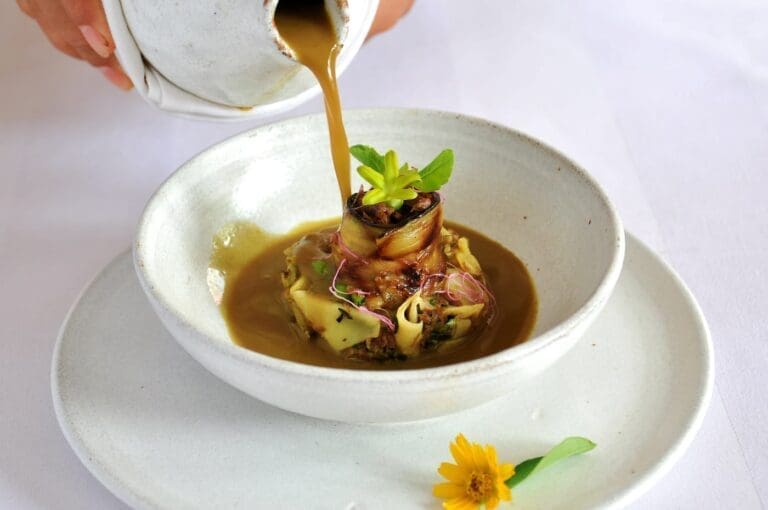
At Embassy, we use traditional Khmer food and recipes. However, we try to take it to the highest level using modern techniques and presentation. We try new combinations. For example, we have one famous traditional dish served at weddings in Cambodia: steamed duck (“tear tum” in Khmer) stuffed with vermicelli. We added purple potato and palm heart purée to the recipe, as we found the taste interesting with the duck.
We always try new combinations and new techniques, but starting from the basics, and following the traditional tastes of Cambodia.
During your recent visit to Australia, you had the opportunity to have some work experience at O Bar and Dining, Sydney. Are there any similarities between Australian cuisine and Cambodian cuisine? And what are the main differences?

When I tried Australian cuisine, a common point with Khmer cuisine really struck me: the taste! Even so, there are many differences since it is Western food and so the cooking techniques are totally different, but some produce is similar too.
Each element of the dishes I tried was really tasty; full of flavour and nothing was bland. And that’s something really present in Cambodian cuisine. Taste comes first!
In your opinion, what is the future of Cambodian gastronomy?
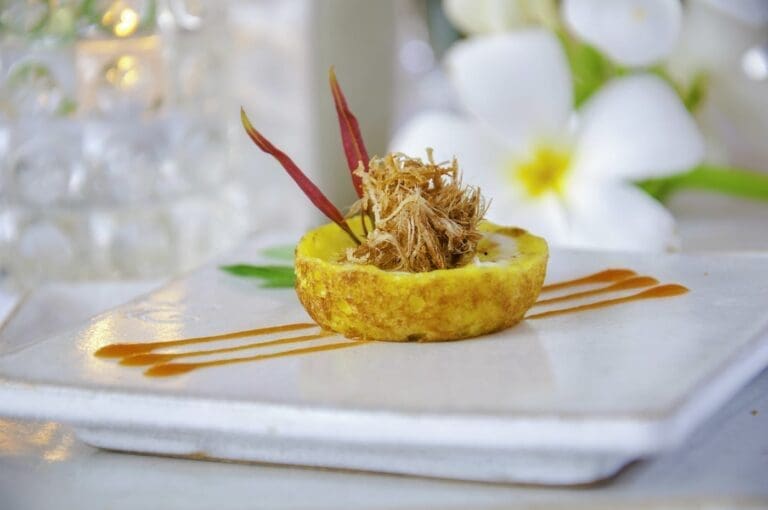
The young Cambodian chefs I’ve mentioned really want to see a change happening in their country. They are driven by the will to make the world discover Khmer gastronomy and deeply know the produce and cuisine of the Kingdom. They are really creative and I think that together we are shaping the future of Cambodian gastronomy.
Moreover, Asian food is famous all over the world, but so far that’s mostly been Chinese, Japanese, Indian and Vietnamese cuisine. I think the next trend will be Cambodian cuisine. It’s so interesting and so rich to explore!



















